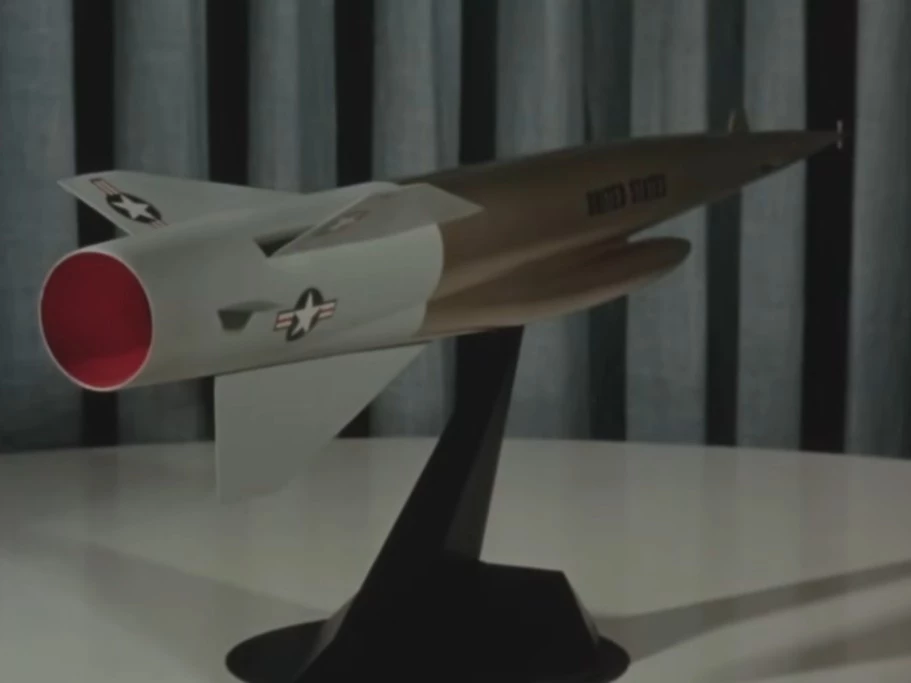Russia has flown a nuclear-arm-capable cruise missile propelled by a nuclear engine. In a televised conference chaired by Russian President Vladimir Putin the 15-hour flight of the 9M730 Burevestnik (NATO name SSC-X-9 Skyfall) was confirmed.
It seems like something out of the Cold War – and in some ways, it is. However, it’s not entirely a surprise in defense circles. Since December 2001, there have been reports that Russia is looking at modernizing its nuclear forces with weapons that would have the range of an Intercontinental Ballistic Missile (ICBM), yet would be able to dodge radar and avoid any anti-ballistic missile defenses.
Now, Russia is saying that just such a weapon has been constructed and flight tested.
“I remember vividly when we announced that we were developing such a weapon, even highly qualified specialists told me that, yes, it was a good and worthy goal, but unrealizable in the near future,” said Putin. “This was the opinion of specialists, I repeat, highly qualified. And now the decisive tests have been completed. Much work remains to be done to put these weapons on combat alert, of course; all the regulations must be followed. Nevertheless, as far as I understand, the key objectives have now been achieved.”
Russian government
Chief of the General Staff Valery Vasilyevich Gerasimov then reported that the Skyfall had not only been successfully tested on October 21, 2025, but had flown for about 15 hours, covering a distance of 14,000 km (8,700 miles).
The existence of Skyfall was first made public by President Putin in a 2018 address when he declared that Russia was developing a weapon with unlimited range that could fly an unpredictable course and was “invincible” when it came to evading current or future Western defenses.
Skyfall attempted its first flight test in 2016, though this was hampered by many technical difficulties and in August 2019 a second test ended in an explosion at a naval range in the White Sea, resulting in the reported death of five nuclear engineers and a radiation spike that was detected by the US.

US Department of War
Russia is extremely tight lipped about Skyfall, but experts have been speculating that it is similar to the American Supersonic Low-Altitude Missile (SLAM) program developed under the aegis of Project Pluto, which was tasked with creating an intercontinental, nuclear-powered cruise missile during the Cold War in the 1960s.
If this is the case, then Skyfall is a cruise missile similar to a Tomahawk except that instead of a jet engine it has a very small nuclear reactor that heats the incoming air, generating thrust. Since the fuel is nuclear, this means that Skyfall has an indefinite range – certainly not unlimited – until the propulsion mechanism fails.
Such a cruise missile would have a very long flight time and would be able to fly at low altitudes while hugging the terrain. By changing course, speed, and altitude unpredictably, it would be extremely difficult to track and intercept.

US Department of War
Not much is known for certain about Skyfall’s specifications, but it is likely launched using a solid-rocket booster, with the reactor kicking in at cruising speed like a ramjet. Its length is believed to be 39 ft (12 m), reduced to 30 ft (9 m) when in flight. Speed is likely to be in the high subsonic range of about 663 knots (760 mph, 1,225 km/h), though some experts think it might reach low supersonic velocity. Some reports have Putin claiming that the missile can reach hypersonic speeds in excess of Mach 5, though this is highly unlikely.
Though it is nuclear capable, there is no indication of the warhead yield. It is highly unlikely that it was armed during the test flights. Whether it will be operational in the near future – or ever – remains to be seen, with many Western experts saying the Skyfall may not be technologically viable or safe to deploy and may weigh as much as 24 tonnes.
Not to mention the geopolitical implications of fielding a weapon that is not only nuclear armed, but nuclear propelled. Just firing such a missile as part of a routine military exercise would be enough to spark international concern.
It presents a mental picture very similar to a hornet’s nest meeting with a deftly wielded stick.
Source: Russian government

